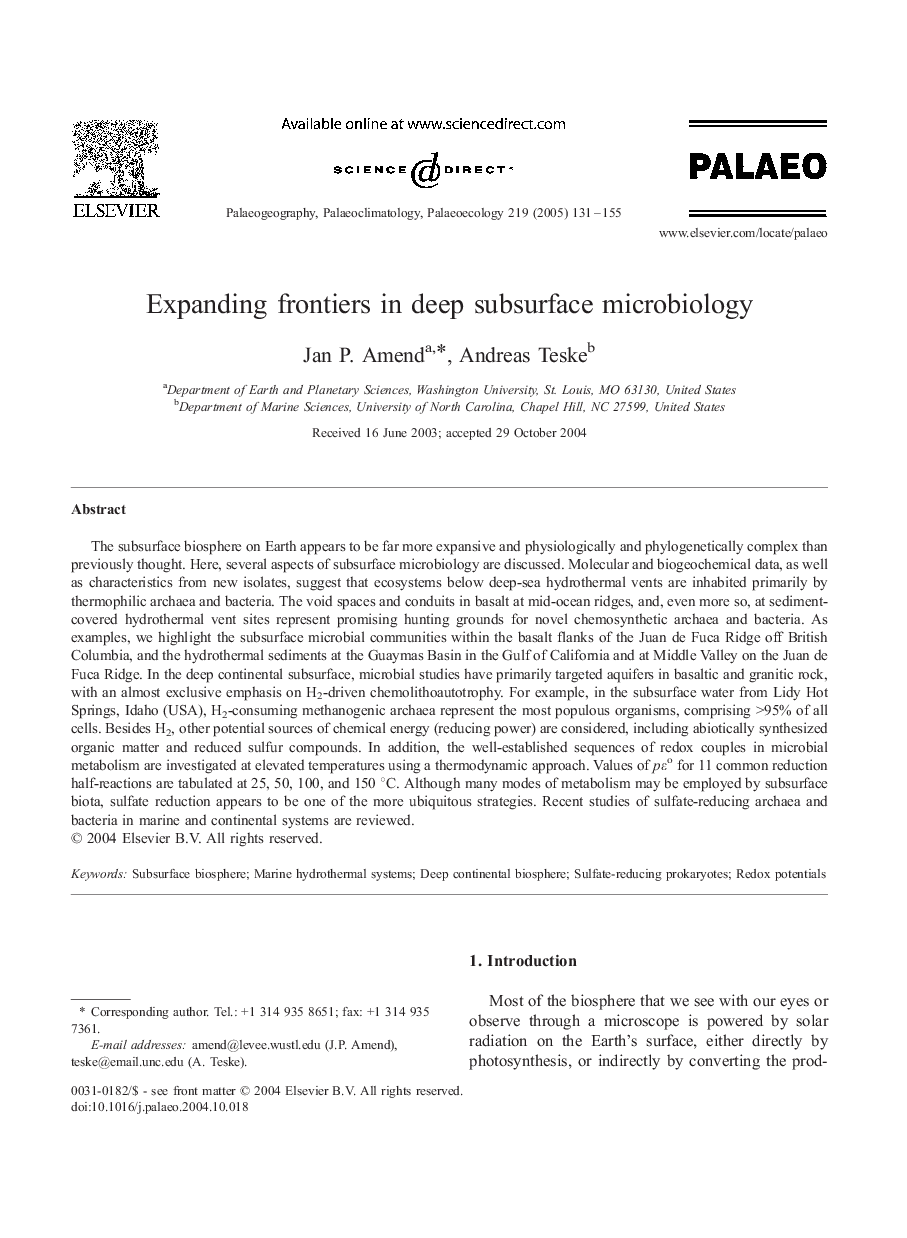| کد مقاله | کد نشریه | سال انتشار | مقاله انگلیسی | نسخه تمام متن |
|---|---|---|---|---|
| 9463138 | 1622399 | 2005 | 25 صفحه PDF | دانلود رایگان |
عنوان انگلیسی مقاله ISI
Expanding frontiers in deep subsurface microbiology
دانلود مقاله + سفارش ترجمه
دانلود مقاله ISI انگلیسی
رایگان برای ایرانیان
موضوعات مرتبط
مهندسی و علوم پایه
علوم زمین و سیارات
فرآیندهای سطح زمین
پیش نمایش صفحه اول مقاله

چکیده انگلیسی
The subsurface biosphere on Earth appears to be far more expansive and physiologically and phylogenetically complex than previously thought. Here, several aspects of subsurface microbiology are discussed. Molecular and biogeochemical data, as well as characteristics from new isolates, suggest that ecosystems below deep-sea hydrothermal vents are inhabited primarily by thermophilic archaea and bacteria. The void spaces and conduits in basalt at mid-ocean ridges, and, even more so, at sediment-covered hydrothermal vent sites represent promising hunting grounds for novel chemosynthetic archaea and bacteria. As examples, we highlight the subsurface microbial communities within the basalt flanks of the Juan de Fuca Ridge off British Columbia, and the hydrothermal sediments at the Guaymas Basin in the Gulf of California and at Middle Valley on the Juan de Fuca Ridge. In the deep continental subsurface, microbial studies have primarily targeted aquifers in basaltic and granitic rock, with an almost exclusive emphasis on H2-driven chemolithoautotrophy. For example, in the subsurface water from Lidy Hot Springs, Idaho (USA), H2-consuming methanogenic archaea represent the most populous organisms, comprising >95% of all cells. Besides H2, other potential sources of chemical energy (reducing power) are considered, including abiotically synthesized organic matter and reduced sulfur compounds. In addition, the well-established sequences of redox couples in microbial metabolism are investigated at elevated temperatures using a thermodynamic approach. Values of pεo for 11 common reduction half-reactions are tabulated at 25, 50, 100, and 150 °C. Although many modes of metabolism may be employed by subsurface biota, sulfate reduction appears to be one of the more ubiquitous strategies. Recent studies of sulfate-reducing archaea and bacteria in marine and continental systems are reviewed.
ناشر
Database: Elsevier - ScienceDirect (ساینس دایرکت)
Journal: Palaeogeography, Palaeoclimatology, Palaeoecology - Volume 219, Issues 1â2, 11 April 2005, Pages 131-155
Journal: Palaeogeography, Palaeoclimatology, Palaeoecology - Volume 219, Issues 1â2, 11 April 2005, Pages 131-155
نویسندگان
Jan P. Amend, Andreas Teske,